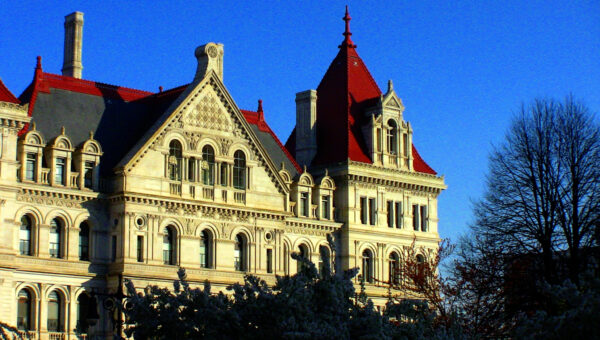
Food for Thought: The Worst Voter Turnout in 72 Years
This week’s Food for Thought piece was authored by the New York Times Editorial Board.
The abysmally low turnout in last week’s midterm elections — the lowest in more than seven decades — was bad for Democrats, but it was even worse for democracy. In 43 states, less than half the eligible population bothered to vote, and no state broke 60 percent.
In the three largest states — California, Texas and New York — less than a third of the eligible population voted. New York’s turnout was a shameful 28.8 percent, the fourth-lowest in the country, despite three statewide races (including the governor) and 27 House races.
Over all, the national turnout was 36.3 percent; only the 1942 federal election had a lower participation rate at 33.9 percent. The reasons are apathy, anger and frustration at the relentlessly negative tone of the campaigns.
Republicans ran a single-theme campaign of pure opposition to President Obama, and Democrats were too afraid of the backlash to put forward plans to revive the economy or to point out significant achievements of the last six years. Neither party gave voters an affirmative reason to show up at the polls.
The states with the biggest turnouts tended to have well-publicized and competitive races, but even competition was no guarantee that voters would show up. Georgia and North Carolina, which had two highly contested Senate races, did only slightly better than the national average for turnout. Some of that is because of regional differences; northern states generally have higher turnout than southern states, as they did this year, because voting tends to correlate with education and income levels.
In northern states, there was a lack of interest, too. The overall vote total dropped by 42 percent compared with 2012, and the decline was particularly acute among younger voters, who made up 13 percent of this year’s electorate compared with 19 percent two years ago. The turnout among young and minority voters was slightly higher than it was in the 2010 midterms, perhaps reflecting new organizing efforts, but the number remained far too low. (Republicans have continued their effort to suppress the turnout of young, poor and minority voters, although it was hard to make a definitive link between those laws and Democratic losses this year.)
There was one useful lesson: When voting is made easier, more people vote. Colorado switched to a mail ballot system this year, and it had the fourth-highest turnout in the nation, substantially larger than in 2010. (It had a highly competitive Senate race, but did much better than many states with equally hot races.) Oregon, which also votes by mail, had the fifth-highest turnout, and Washington State, with a similar system, did better than the national average, though it had no major statewide races.
Early voting — which tends to be more popular among Democratic voters than mail balloting — also did well this year, despite Republican efforts to curb it. In North Carolina, early voting increased by 35 percent from 2010, even though Republican legislators cut the number of early-voting days to 10 from 17.
Showing up at the polls is the best way to counter the oversized influence of wealthy special interests, who dominate politics as never before. But to encourage participation, politicians need to stop suppressing the vote, make the process of voting as easy as possible, and run campaigns that stand for something.

